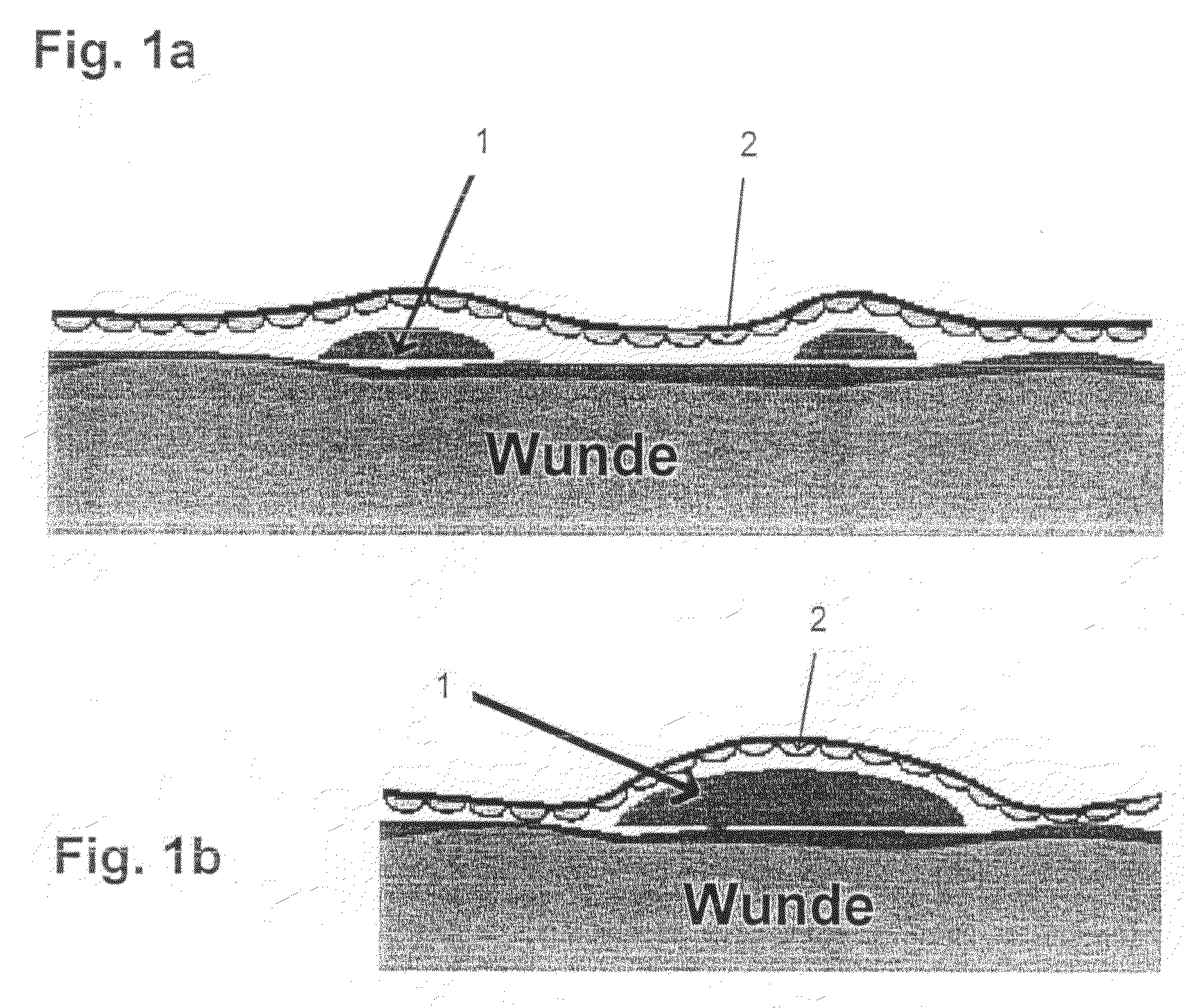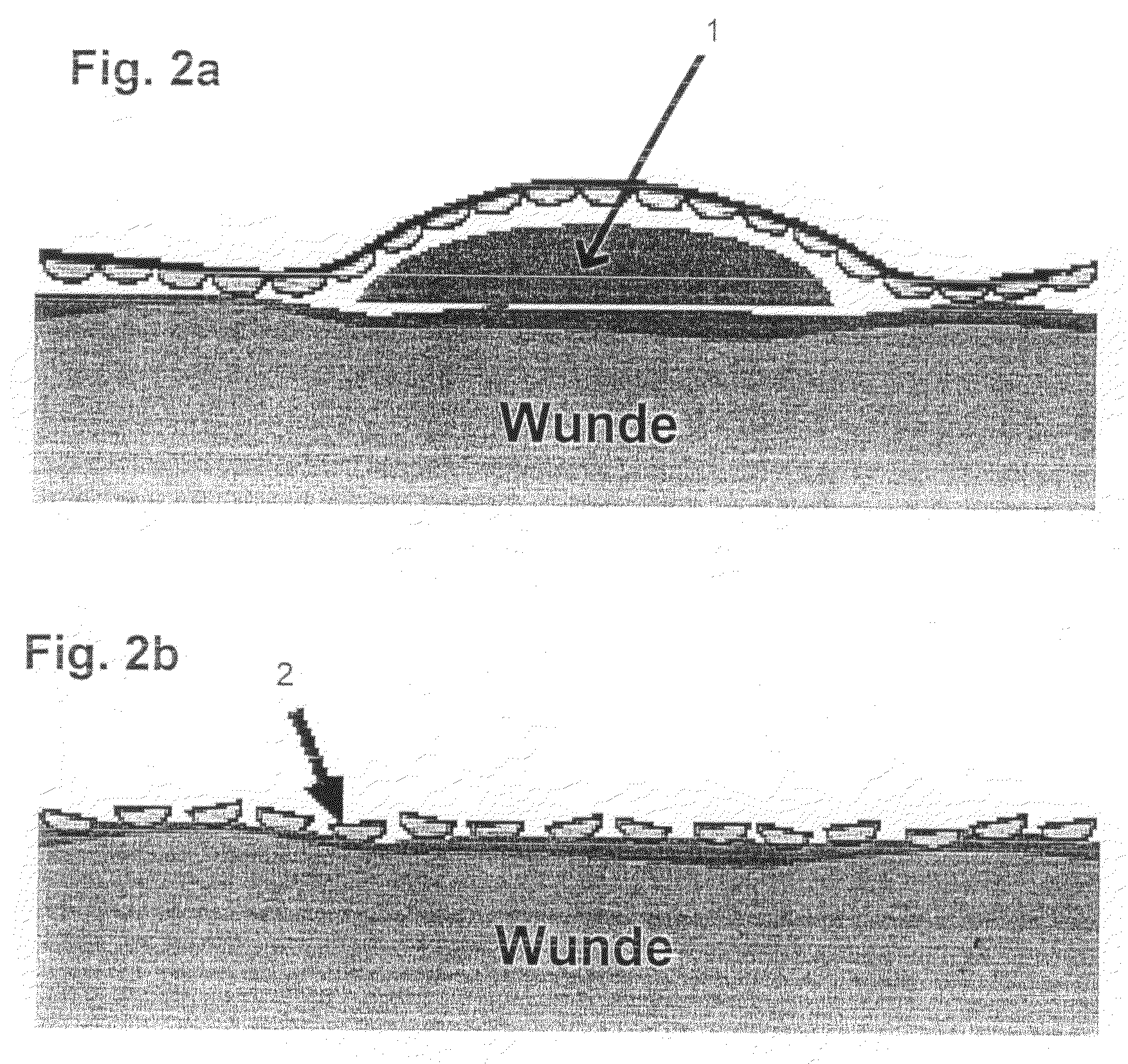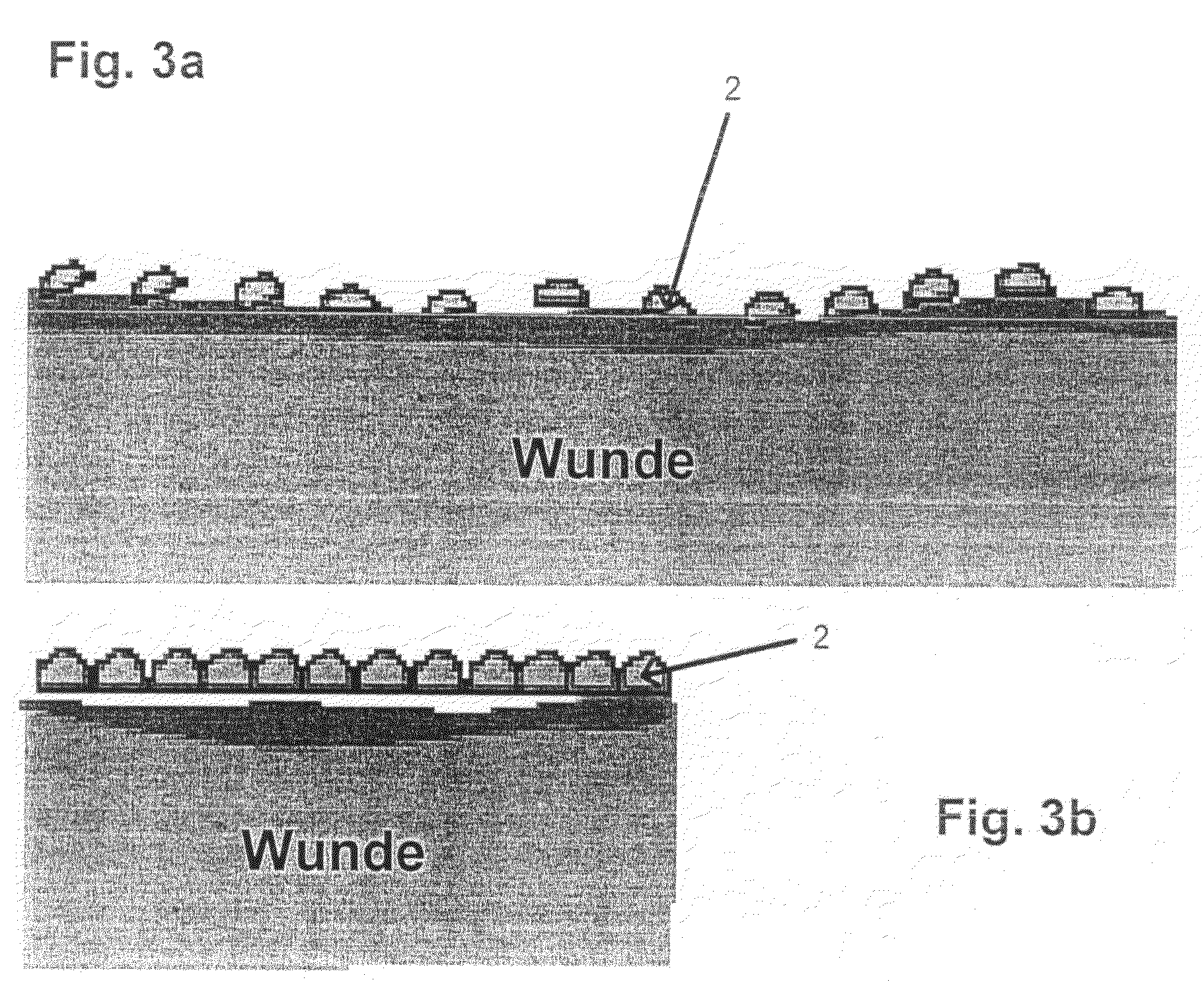Artificial “arterio-venous” permeable hollow fiber capillary system
a hollow fiber capillary and arteriovenous technology, applied in the field of capillary wound dressings, can solve the problems of acute skin wound treatment, clinically unsatisfactory, and not completely satisfactory clinical results, and achieve the effects of improving the mass exchange of wounds, facilitating drug-, mediator-, growth factor- and antibiotic/disinfectant perfusion, and moderate negative pressur
- Summary
- Abstract
- Description
- Claims
- Application Information
AI Technical Summary
Benefits of technology
Problems solved by technology
Method used
Image
Examples
Embodiment Construction
[0037]In the following detailed description of the preferred embodiments, reference is made to the accompanying drawings, which form a part thereof, and within which are shown by way of illustration specific embodiments by which the invention may be practiced. It is to be understood that other embodiments may be utilized and structural changes may be made without departing from the scope of the invention.
[0038]FIG. 1 depicts prior art clinical application of in-vitro cultured cells sheets causing problems due to blister development, in turn reducing the attachment rate of the cells. FIG. 1a depicts a schematic representation of the problem of clinical application of in-vitro propagated cell sheets 2 and the resulting blister development (see arrow 1). FIG. 1b shows how the blister (see arrow 1), expands during the attachment phase of the cell sheets 2 which negatively affects the adhering process of the cells to the skin. As a reference, the term “Wunde” is German for the term “Woun...
PUM
| Property | Measurement | Unit |
|---|---|---|
| internal diameter | aaaaa | aaaaa |
| internal diameter | aaaaa | aaaaa |
| diameter | aaaaa | aaaaa |
Abstract
Description
Claims
Application Information
 Login to View More
Login to View More - R&D
- Intellectual Property
- Life Sciences
- Materials
- Tech Scout
- Unparalleled Data Quality
- Higher Quality Content
- 60% Fewer Hallucinations
Browse by: Latest US Patents, China's latest patents, Technical Efficacy Thesaurus, Application Domain, Technology Topic, Popular Technical Reports.
© 2025 PatSnap. All rights reserved.Legal|Privacy policy|Modern Slavery Act Transparency Statement|Sitemap|About US| Contact US: help@patsnap.com



